Neutrinos are elementary particles, and their name comes to us from the Italian language, in which it means “small neutron.”
An elementary particle is a particle that is not made up by other particles. They are the smallest units of matter, and everything is made up of them: from your body to the clothes you are wearing, from the candy you eat to the water you drink.

Elementary particles can be roughly classified into three types: fermions (the building blocks of matter), gauge bosons that transmit force, and Higgs bosons, which give particles their mass. In addition, for each of those particles there is an anti-particle which has the opposite charge. Neutrinos belong to the group of fermions known as leptons.
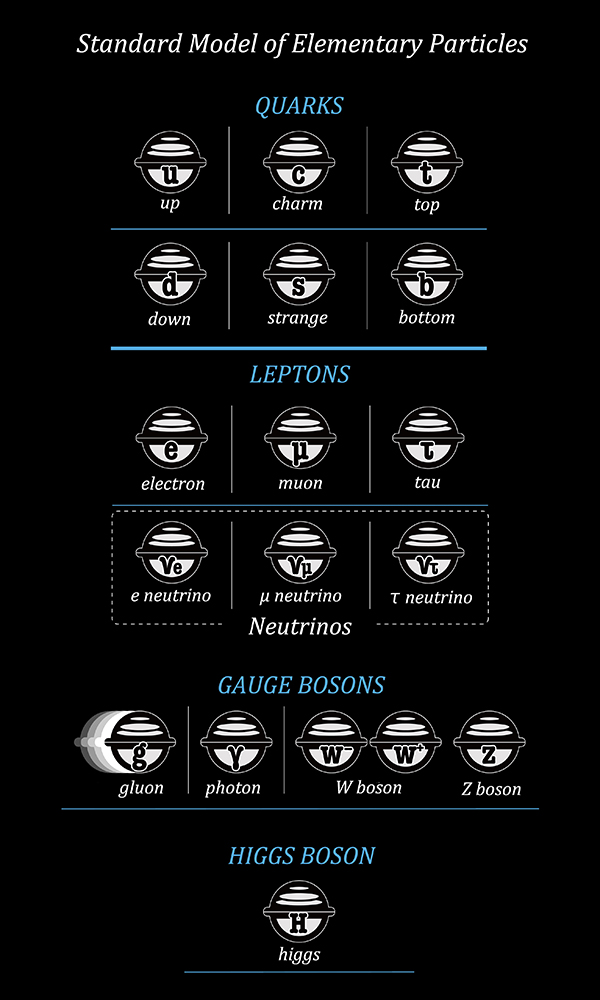
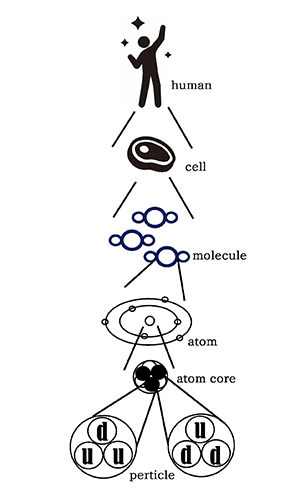
What exactly do we get when we have a group of elementary particles gathered together?
Let us look to the human body to get a better understanding of the concept.
The human body is made up of cells.
Each of those cells is made up of various molecules.
Those molecules are comprised of a number of connected atoms.
But atoms are not the smallest elements of matter. In fact, each is comprised of a nucleus around which electrons orbit. Those electrons are elementary particles classified as charged leptons.
Those atomic cores, or nuclei, are made up of protons and neutrons.
Protons and neutrons are each comprised of three elementary particles called quarks.
Now, it is not only people that can be broken down into many types of elementary particles like this. The desk you sit at and the pen you write with are the same, as are your food, water and smartphone.
When we think about it in this way, the idea of elementary particles does not seem so alien anymore.
Elementary particles are in fact a surprisingly familiar part of our lives, but the neutrino is one elementary particle that is cloaked in mystery.
What we do know is that our planet is under constant bombardment by a stream of neutrinos from space.

Neutrinos are free from both positive and negative charge, which means that they are not attracted or repelled by other charged particles.
They are also extremely tiny, so they can even pass right through atoms.
In fact, we are all penetrated by neutrinos all the time. Every single second you sit here reading the words on this website, you have 100 trillion neutrinos flying through your body.
But we never feel anything.
There are three types of neutrinos currently known: electron neutrinos, muon neutrinos, and tau neutrinos.
University of Tokyo professor Takaaki Kajita shared the 2015 Nobel Prize in Physics for his work on the Super-Kamiokande Neutrino Detection Experiment, during which he measured the oscillations (transitions between the different types) observed on the three types of neutrinos, thereby contributing to the discovery that neutrinos have mass.
Up until that point it was thought that neutrinos were massless, so the discovery set off a shockwave in the world of particle physics.
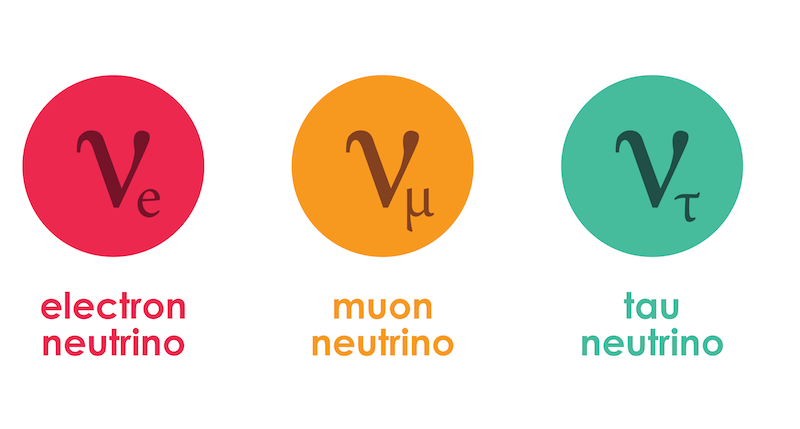
So, if all the above is true, exactly how did the neutrino ever get discovered in the first place, and how did people research it?
Around 1930
The first person to realize that something was out there was Wolfgang Pauli. He was studying the phenomenon of beta decay. A beta decay is the process in which a neutron splits up into a proton, an electron and a neutrino (which was unknown at this point). He noticed that the energy of the neutron was higher than the combined energy of the proton and electron produced by the decay. He proposed that behind this phenomenon, which seemed to be inconsistent with the law of conservation of energy, there was a hidden particle carrying that missing energy, thus predicting the existence of neutrinos.

Around 1933
The mysterious particle was named in 1933 by Enrico Fermi, who was also studying beta decay based on Pauli’s theory.

Around 1953
Pauli’s proposed neutrino was first detected in 1965 by Frederick Reines and his colleagues. Those researchers successfully detected neutrinos generated within a nuclear reactor more than 20 years after the particle was given its name.

Around 1970
In the 1970s, Raymond Davis, Jr. was first to detect neutrinos generated during nuclear reactions within our own Sun. There were far fewer neutrinos being detected than was predicted by theory, so this discovery meant that the theory needed to be completely re-examined and re-formulated from the ground up.

Around 1987
University of Tokyo professor Masatoshi Koshiba and his group successfully detected neutrinos emitted during a supernova in 1987 using the Kamiokande Neutrino Observatory built in a former mine in Kamioka, an area in Gifu Prefecture.

Around 1998
Atmospheric neutrinos continued to be observed in Japan by Super-Kamiokande (completed in 1996). University of Tokyo professor Takaaki Kajita and his colleagues studied that data, and in the process discovered the phenomenon of neutrino oscillations, which was the very first proof that neutrinos have mass. Their work will have an immense influence on research in this field well into the future.

It has taken many physicists a long time to reveal the nature of neutrinos, and numerous researchers have been awarded Nobel Prizes in Physics for their work.
Even now, many researchers around the world are continuing their work into neutrinos, including the researchers at the IceCube neutrino observatory.
Capturing the “invisible” neutrinos is not a simple task. Often they simply pass through everything around them, rarely interacting with matter. However when they do collide with an atomic nucleus or electron, new (often charged) particles are produced. When such charged particles, moving at speeds close to the speed of light, pass through a medium like water or ice, light is produced. This light is called “Cherenkov radiation” and researchers use it to detect neutrinos.
For example, the Super-Kamiokande observatory uses such a technique. Located in a former mine in the Kamioka area of Gifu Prefecture, Super-Kamiokande uses a massive tank of water to detect Cherenkov radiation created by the neutrinos.
But due to their elusiveness, large observational facilities are required to detect more than a handful of neutrinos. In order to build large enough facilities, vast pieces of land would be needed.
Instead, the idea of placing detectors in existing large bodies of water such as lakes or oceans was considered, but wind and waves could interfere with detection.
Ultimately it was decided to place detectors into “water” that was in a different phase - i.e. ice - which due to its hardness would not be affected by wind and waves. ICEHAP is a part of the IceCube project to use ice to detect neutrinos.
Highly transparent ice is available year-round at the South Pole, and it was there that the world’s largest neutrino observation facility was built. A total of 5,160 photodetectors are embedded in the ice, and they capture the light emitted when neutrinos interact with the water molecules as they pass up through the ice sheet.
Learn more about the IceCube project here.


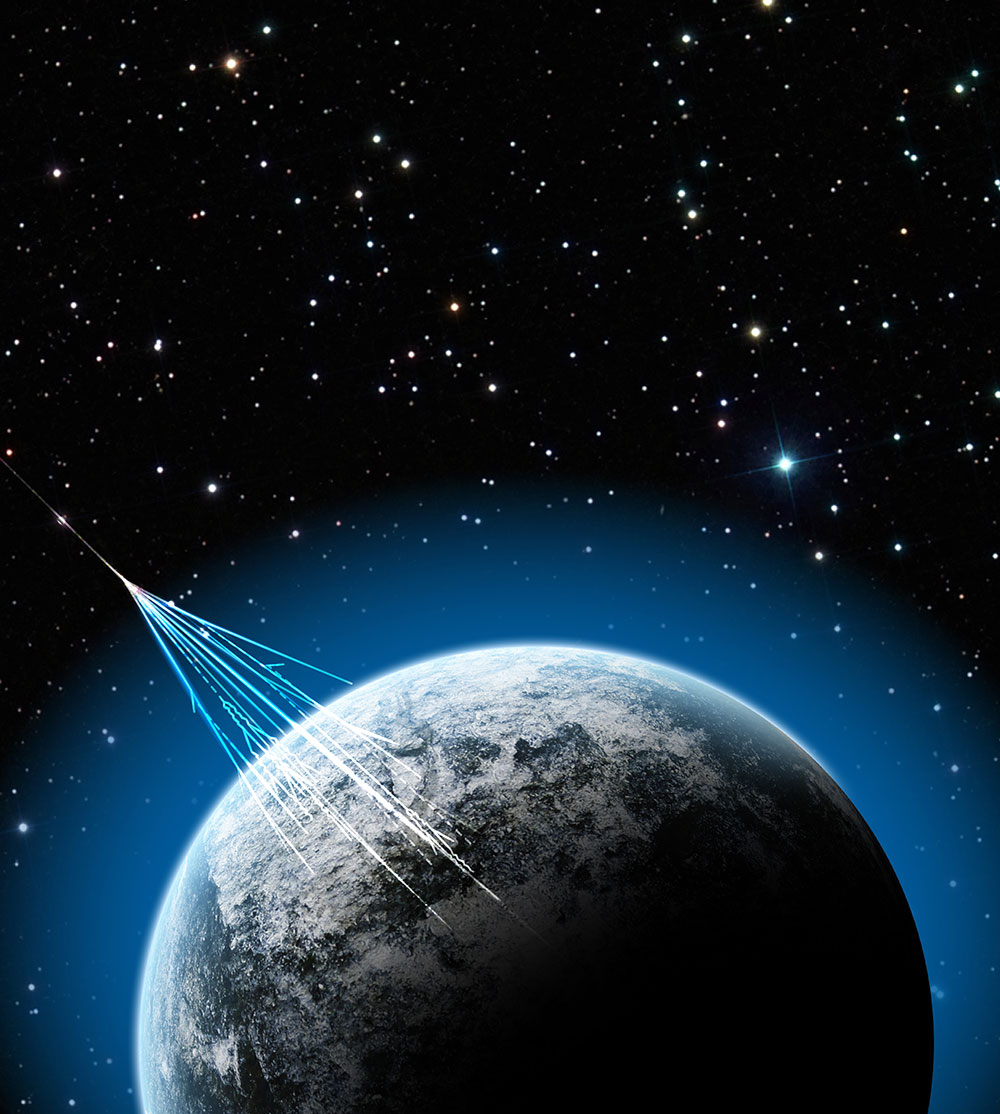
After photons, neutrinos are the second most abundant elementary particle in the universe. While they are invisible to the eye, they are constantly flying around us, yet the puzzles surrounding them are yet to be explained. It is thought that by understanding the nature of neutrinos, we will be able to learn more about the mysteries surrounding the origin of the universe.
Many researchers are looking at the penetrative ability of neutrinos. For example, neutrinos are expected to play an important role in helping us understand the origin of the high-energy cosmic rays that travel through the universe to fall upon the Earth at nearly the speed of light.
Cosmic rays were discovered more than 100 years ago, but there is still little known about them. Uncovering their origin is the greatest remaining challenge in astrophysics.
After a cosmic ray is emitted somewhere in space, its path is influenced by the radiation, gases, and other substances that fill the universe, so by the time it arrives at Earth, it is moving in a different direction than when it was emitted. That is why it is difficult to determine the origin of a cosmic ray using its direction of arrival - it did not travel in a straight line.
We know that when a cosmic ray collides with something, a neutrino can be emitted.
Neutrinos pass right through radiation and gas, and their paths are unaffected by the presence of magnetic fields, so they fly straight and trough. Unlike cosmic rays and gamma rays, they can have traveled from the farthest reaches of the universe and we can still trace their paths back to their origin. In addition, these neutrinos pass through distant regions that we cannot observe even using the latest in modern techniques and technologies, so researching them takes us a step closer to shedding light on those mysteries of the universe we have yet to understand.
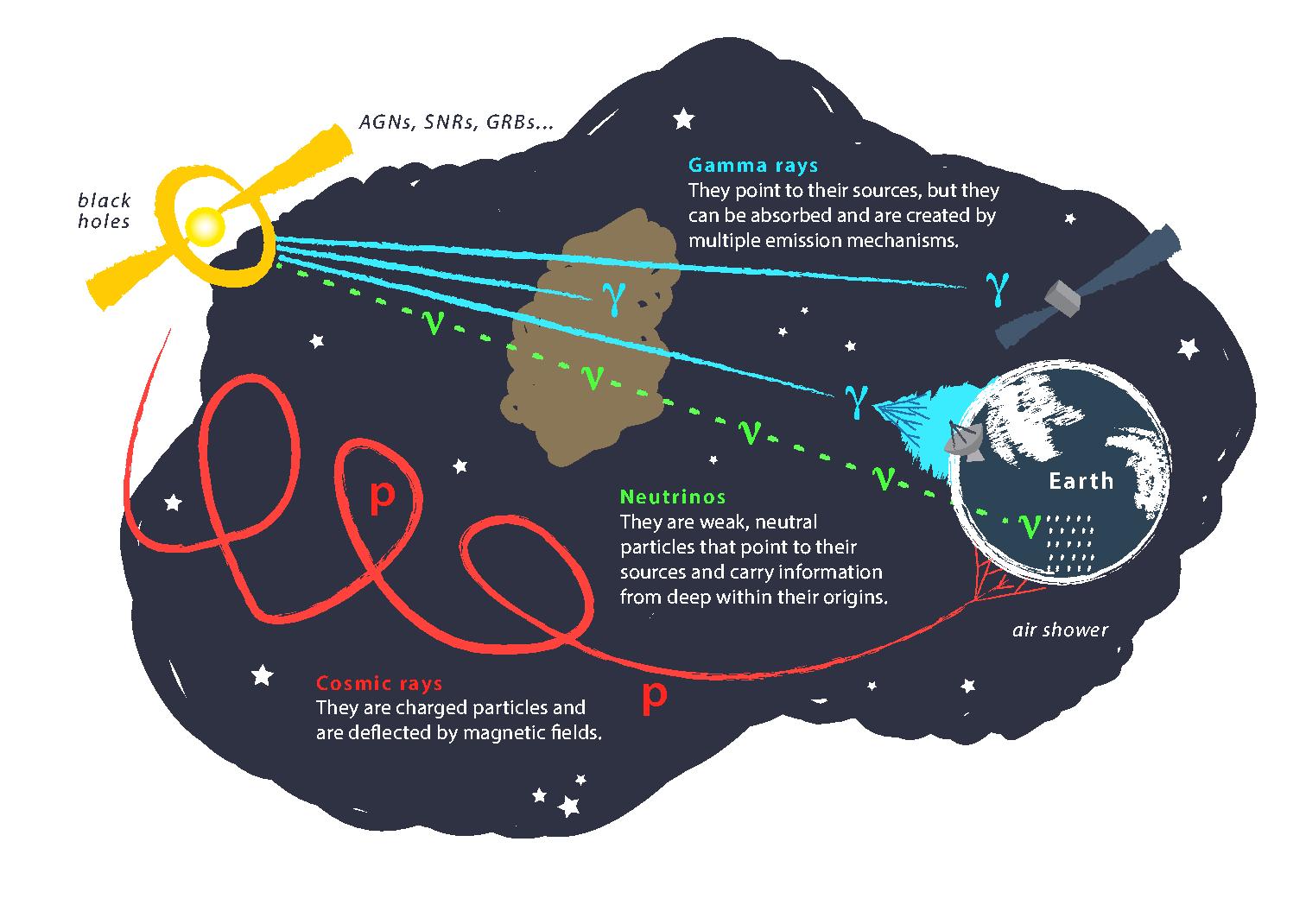
©IceCube Collaboration
So, gaining an understanding of neutrinos could be the key to understanding our ultra-high-energy universe. This truly 21st century field of research is called Neutrino Astronomy.
Multi-messenger astronomy is another new field that has gained attention in recent years, and researchers there observe the universe through a coordinated observation of not only neutrinos, but also gamma rays and other forms of electromagnetic radiation, gravitational waves, and more. All these observational phenomena are generated through different mechanisms, so by integrating the observational data, it is possible to gain more information about their source.
At ICEHAP, we have built a system that identifies high-energy neutrino signals in real time, and promptly sends out detection alerts to astronomical observation facilities worldwide. Through this system, when IceCube’s detectors find a particularly unique neutrino signal, its original direction of travel can be analyzed in real time. Then, by sending out a news alert to observatories around the world, the potential target can be immediately tracked in visible light, radio, and gamma rays.
This groundbreaking technique was used in September 2017 when IceCube detected a high-energy neutrino event and the system sent out a news alert that allowed other observatories to pinpoint the target and look for gamma rays, visible light and more, thereby leading to the first successful identification of a high-energy neutrino source.
This success was made possible by bringing together a variety of observational methods, with neutrino observation as the key, and there is a lot of interest in using this new technique to take on new challenges in exploring our universe.
Learn more about multi-messenger astronomy here.